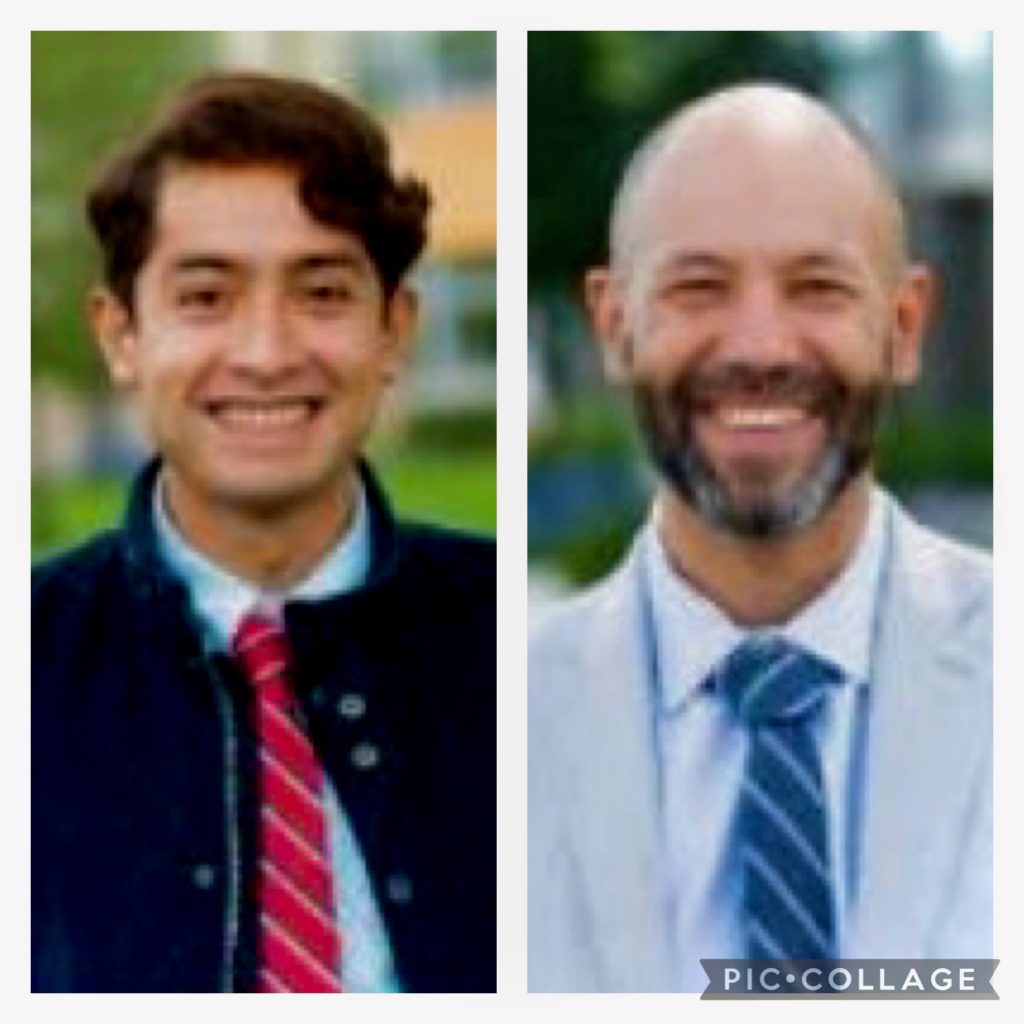Alex Gobran ‘23 | Riya Mukherjee ‘23
Episcopal will experience a disproportionate loss of teachers of color in their faculty, with Upper School History teacher Kalil Oldham, Upper School English teacher Alexander Jimenez, and Upper School Math teacher Grace Wingfield leaving at the end of this year.

Photo courtesy of Ashley Kennedy
Jimenez emphasizes that he made his decision to depart from EA primarily because he is “ready for the next opportunity and the next chapter in [his] life.” Similarly, Oldham and Wingfield’s reasons for leaving are not due to any unhappiness at EA. Oldham wanted to take on an administrative role as Director of Equity and Community at a new institution that is “progressive with a long history of commitment to the values of diversity, equity, and inclusion,” while Wingfield “got an administrative position at another school, in another area. [… She] was seeking a higher level position, and there was nothing available at Episcopal.”
While all three teachers feel satisfied with their time here, they both believe that there is still room for improvement in the role of diversity, equity, and inclusion at EA. Jimenez remarks on the racial culture at EA, saying “historically, it is predominantly white, both for students and faculty.”
Consequently, he “can appreciate where certain assumptions in the community stem from.” For instance, he describes his own encounters with stereotypes: “My first two years here I was frequently mistaken for a Spanish teacher. It became clear that just based on the shape of my nose and the color of my skin and my presence in the Upper School that the first thought people had of me, especially when they saw my last name, was that I must be a Spanish teacher. I know that my students also experience those microaggressions.”
Oldham also comments on his personal experiences with diversity at EA, explaining, “Being the only person of color in an academic environment is something that I notice, that I feel, and that affects me. I am not saying that I am sad or angry, and I love all of the members of the history department, but there is a lack of diversity on the faculty at EA.”
Wingfield agrees, noting, “Of course, I do find that with diversity, there is a large gap in the number of teachers of color at EA. There’s not a good representation for our student body and for our community.” She adds that although “there has actually been a decrease in diversity for teachers, for students, there’s been an increase. In terms of action and support of diversity and inclusivity and equity work, that has increased as well.”
Still, the teachers believe that racial justice reforms are important within the EA community. Jimenez elaborates, “I think that EA, along with other schools on the Main Line, has a lot of work to do. I think that work requires time and continuous commitment, and EA is still trying to figure out what that time and commitment looks like.” Oldham adds that improving diversity at EA “is difficult, but not impossible, for a school that’s historically been predominantly white to truly offer a sense of inclusion and belonging to students who don’t fit that mold. Students should know that school leaders are committed to this work.”
Moving forward, Jimenez believes that changes to the structure of EA would make for a more inclusive and diverse environment, saying, “My recommendation would be to have stronger messaging, to be unapologetically committed to racial justice, diversity, equity, and inclusion work, and by consequence, to make time and provide resources to DEI work and racial justice work.”
Oldham suggests “not shying away from conversations about race and racial justice, being open with parents and other members of the community about the conversations that are happening at school, listening to kids, and supporting the affinity spaces.”
He also proposes “having hiring practices that are committed to diversifying faculties.” Ayinde Tate, Director of Diversity, Equity, and Inclusion at EA, responds, “One of the ways that we were trying to do better, even if they weren’t departing, was to put myself on the front end of the hiring process. We get to look at everyone’s resumes, and then we screen people to see who all should come in for the second round of interviews.”
He continues, “I hear a lot of the department chairs saying, ‘We’re looking for people from all walks of life: gay, straight, black, brown, Asain, Hispanic, Latinx. A person that brings in something that we’re missing in our department.’”
Jimenez believes that EA “should also commit to inspiring curricular change that welcomes diversity, equity, and inclusion work.” Tate explains that EA is “doing a full-blown curriculum review. Every teacher is going to have the same ten-step guide to look over their content of the last years, and really dive-in and think about whose voices are missing, whose voices are overly present, and how can [they] incorporate different perspectives to allow kids to see themselves both through mirrors, seeing themselves reflected in the curriculum, and also windows, seeing the curriculum through other sets of eyes.”